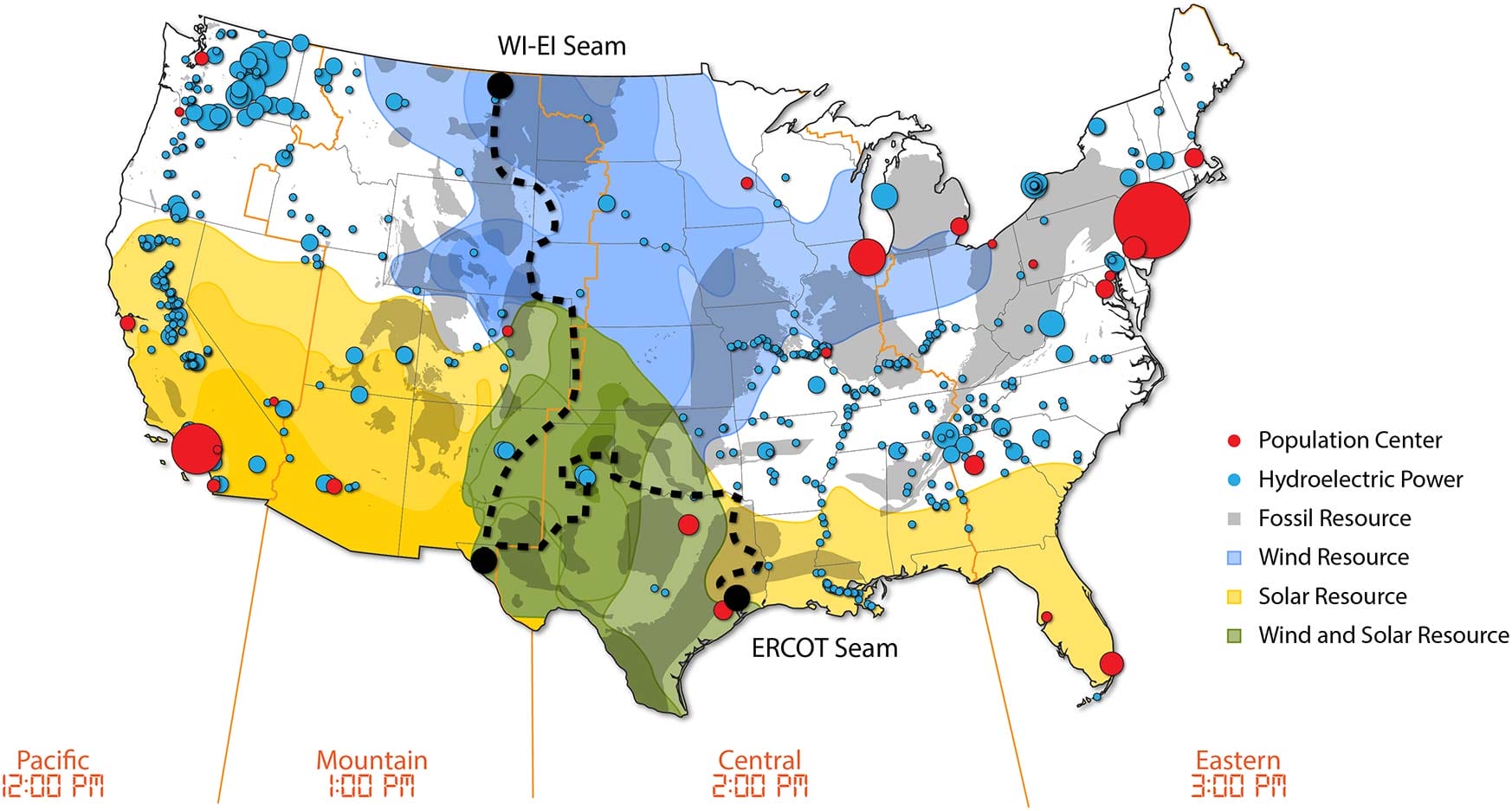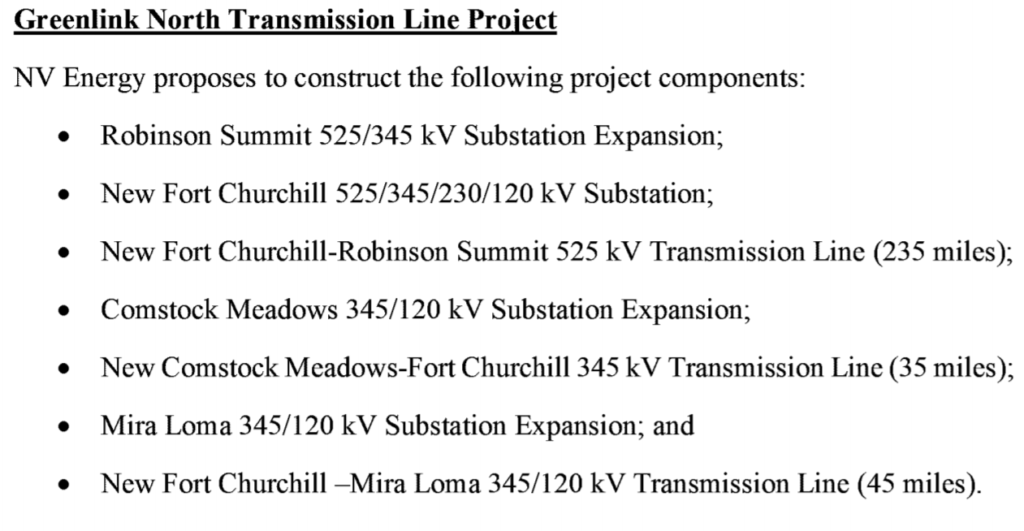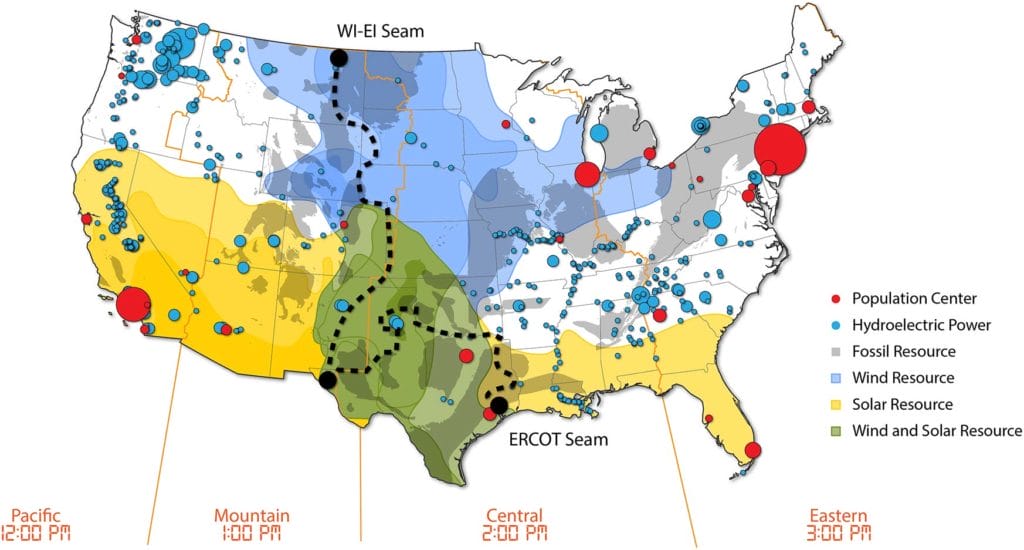NV Energy, an electric utility in Nevada, is seeking to build three solar plus energy storage power plants. The solar power plants, in total, are 478 MWac/~600 MWdc – with the energy storage being 338 MW/1.35 GWh.
Roughly speaking, a 600 MWdc solar plant will cost about $540 million to build at around or under 90¢/watt. A 1.35 GWh battery will probably cost $150/kWh when it is deployed – totaling about $200 million. This would bring the cumulative out of pocket construction costs for the three projects to $740 million.
The three facilities signed power purchase agreements at 2.335¢/kWh, 2.245 and 2.402 for the electricity from the three power plants. The energy storage portions were paid $6,870/MW-month, $6,800 and $6,875.
A more detailed analysis (239 pages) can be found in the filings here.
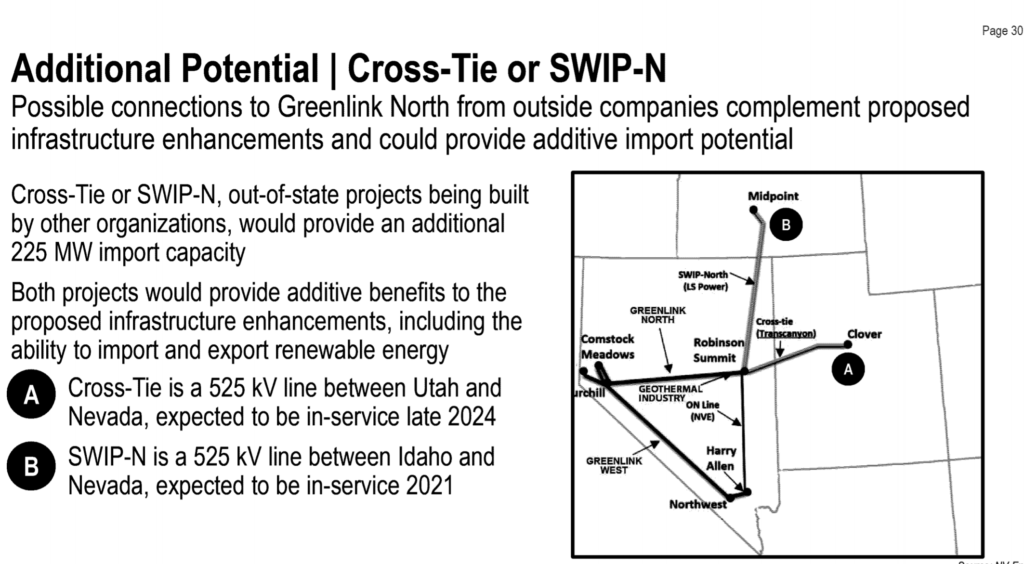
Pardon the rough images, the filings weren’t the greatest
And while, building 600 MW of solar, and greater than a gigawatt of energy storage is pretty significant in an of itself, this particular bid includes something special: 669+ miles of high voltage power lines estimated to cost $1.1 billion.
The two main power lines Greenlink North and Greenlink West requested. Per the filing, the 525-kV Greenlink North will run 235 miles, and the Greenlink West, also 525-kV, will run 319 miles, with a 35 mile extension that connect to Las Vegas.
Included in the construction of these power lines are multiple new and expanded electrical facilities. The Greenlink West project includes one switching station expansions, a substation expansion and two collection substations. The Greenlink North project will build a new substation, while expanding three.
In addition to the main power line set, there are three smaller 345-kV lines would run come from the far west higher population city Reno to Yerington, which is located on the westernmost corner where the North & West Green lines meet. This power line will bring an important city into the state’s broader power line set.
These power lines would increase the state’s ability to import 1.5 GW of cheap hydro electricity from the Pacific Northwest, and per a the filing by the utility – would be required by Google to meet their 100% clean datacenter goals.
A analysis suggests that management of the power lines will generate an average of $2.1 million in “annual economic activity,” and support around 9 jobs with $822,000 in wages. If approved, the utility says it’ll take greater than ten years for the transmission projects to be completed.
The power line gives this author a bit of excitement because if nation states take on broad electricity transmission, they’ll be able to clean their electricity generation much faster.
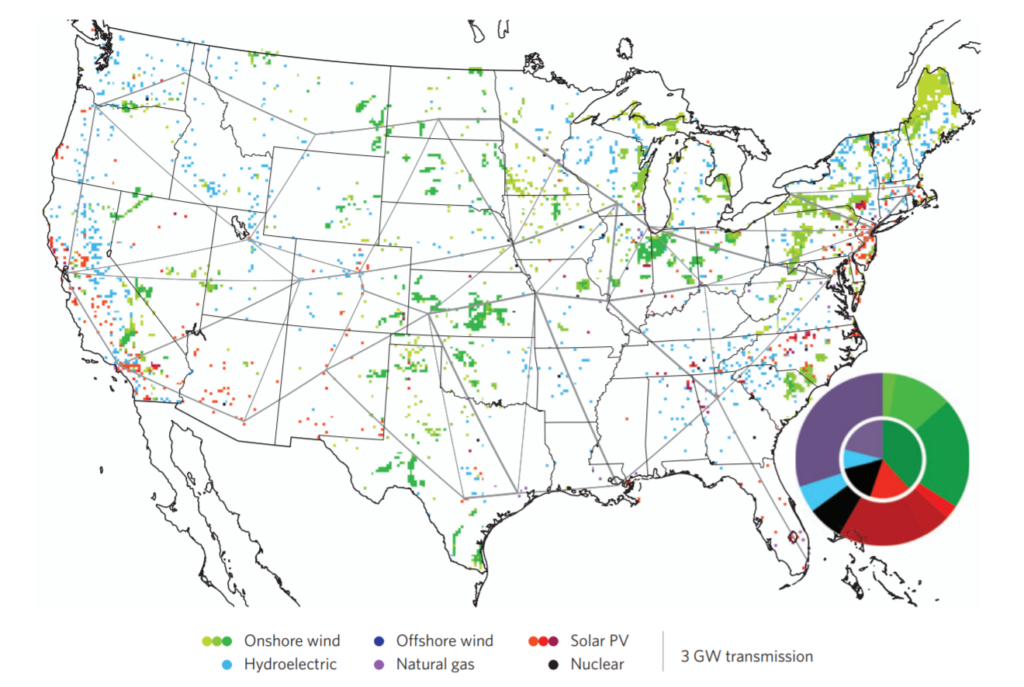
Cost-optimized single electrical power system for the contiguous US, using data year 2007; DOI:10.1038/NCLIMATE2921
Research in the United States says we could hit 100% CO2 free electricity from wind+solar+hydro+nuclear with a nationwide high voltage DC network. We could get to 80% wind+solar with 12 hours of energy storage alone, but it would be much cheaper if we linked up power lines.
China’s recently completed construction of their largest solar power plant – 2.2 GW – which is also the world’s second largest facility. Interestingly – this facility connects directly to the country’s newly built UHVDC power line network that will move this solar electricity from the open western lands, to the highly populated eastern portion of the country.
A power line connecting Canadian hydroelectricity to the Northeast USA could save New England and New York many gigawatts of capacity, and billions of dollars. Recently, a version of this was given small go ahead as courts approved the power purchase agreement.
The NREL Interconnection Seams study suggested strategic connections between the three main power grids in the United States which would offer optimal electricity pricing taking advantage of each region’s unique generation strengths.
Even before we build much *new* transmission, we could instead upgrade our existing infrastructure and unlock 500 GW of clean energy capacity already in the interconnection queues around the nation.
A description of the three solar+storage projects from the NV Energy Press Release:
- Dry Lake Solar Project – 150 megawatt solar photovoltaic project with a 100 megawatt, four-hour battery storage system. The project will be located in Clark County, NV, 20 miles northeast of Las Vegas in a designated Solar Energy Zone on land leased from the Bureau of Land Management. It is being developed by NV Energy and will become its second and largest company-owned renewable project.
- Boulder Solar III – 128 megawatt solar array that includes a 58 megawatt, four-hour battery storage system. The project will be built in Clark County, NV in the Eldorado Valley south of Boulder City. It is being developed by 174 PowerGlobal and KOMIPO America Inc., who have vast experience developing over 550 megawatts of utility-scale solar generation plants in the Eldorado Valley. 174 PowerGlobal’s solar energy and battery storage project pipelines in North America exceeds 10 gigawatts, including 2 gigawatts contracted and another 1.5 gigawatts in operation.
- Chuckwalla Solar Project – 200 megawatt (AC) solar photovoltaic array coupled with a 180 megawatt, four-hour battery storage system. The project will be located in Clark County, NV 25 miles northeast of Las Vegas within the Moapa River Indian Reservation. It is being developed by EDF Renewables North America, a market leading independent power producer and service provider with 35 years of expertise in renewable energy. EDF Renewables’ North American portfolio consists of 16 gigawatts of developed projects and 11 gigawatts under service contracts.
